From 1250 to 1266, four successive popes worked to sell the Kingdom of Sicily to any capable European warrior-aristocrat who could afford their steep asking price. The trouble was, the papacy didn’t own Sicily. The kingdom already had a king. Anyone who bought what the popes were selling would still have to conquer Sicily themselves. Last week, we looked at the years 1250 to 1263, where three successive popes shopped the offer around to a variety of nobles, but found no one who was both interested and could pay. This week, we’re doing the second half of the story: the conniving and conquest by the people who finally took the popes up on the offer. It’s a really interesting template for a high-level adventure: conquering a kingdom you’ve already purchased.
This post is brought to you by beloved Patreon backer Justin Moor. Thanks for helping keep the lights on! If you want to help keep this blog going alongside Justin, head over to the Patreon page – and thank you!
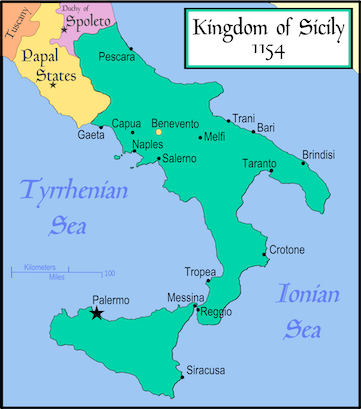
Image credit: MapMapster, released under a CC BY-SA 3.0 license.
To recap last week’s post, the reason why the popes had originally wanted to sell the Kingdom of Sicily in 1250 was complicated, but by 1263 it was simple: King Manfred of Sicily kept fighting wars with the papacy. His kingdom included not just the island of Sicily, but also southern Italy, from which he could menace the papacy in Rome. Multiple successive popes spent basically no time in Rome as a result. Those popes felt it would be really great if someone would pay the papacy’s war debts and replace Manfred. Various popes had reached out to various people, offering to sell a kingdom the papacy didn’t actually control, but all the deals had fallen through.
In 1263, Pope Urban IV reached back out to someone who’d already turned down Sicily: Charles of Anjou, the younger brother of the King of France. Only France had the military power to challenge King Manfred of Sicily. Of the French warrior-aristocrats, only Charles had the seniority and the military ability necessary to pull off a stunt like this. And Charles wanted to be a king! He chafed at having lost out on rule of France by having been born too late while his older brother, the incompetent King Louis IX, pissed away all his advantages through dithering, inconstancy, and a piety that bordered on the pathological. Charles of Anjou, by contrast, was ruthless, ambitious, and cheap. He’d only turned down Sicily last time because Louis was still off on the Seventh Crusade (doing a terrible job, by the way), and Charles had promised to look after France in Louis’ absence, while sending the French king all the money and supplies he could. At the time, Charles had neither the freedom nor the cash to buy and conquer Sicily. But by 1263, Louis was home and Charles was free.
For Charles to be permitted to make a play for Sicily, his brother would have to be convinced. King Louis was back from the Holy Land, but was already preparing for his next crusade. (It would go even worse than the first.) Because Louis was such a pious man, he disliked the idea of Christians making war on one another. He had, of course, made war on fellow Christians in the past, but he’d felt bad about it and that made it OK. The ever-ambitious Charles of Anjou clearly relished the prospect of going to war with Christians in Sicily, and that gave Louis pause.
To get Louis to agree to this scheme, Urban IV sent to Paris a papal official who’d been working on the Sicilian problem for ten years. Louis had a lot of legal, moral, and religious objections to the plot, and this official had carefully-considered weaselly answers to each of them. But despite everyone’s posturing that they were all trying to do the right moral thing, it ultimately came down to extortion. Pope Urban IV would not sign off on another crusade until King Manfred of Sicily had been dealt with. If Louis wanted to go abroad and redeem himself after his earlier disaster, he’d better let his younger brother Charles go seize Sicily. Louis gritted his teeth and gave Charles permission.
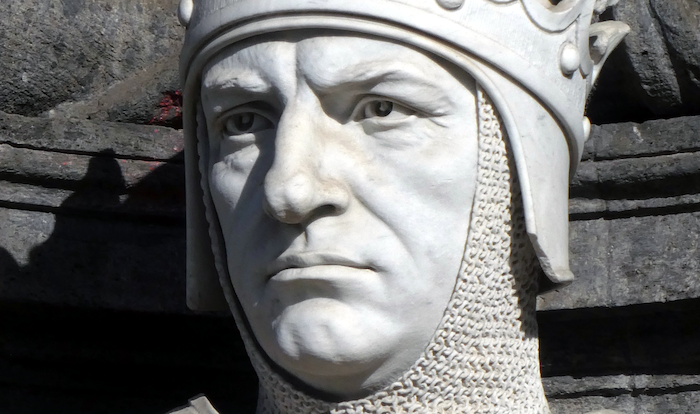
Image credit: Geak, released under a CC BY-SA 4.0 license.
It quickly became clear that this was as far as King Louis would go. He wasn’t going to give Charles of Anjou any money for the war or call up France’s knights and bid them follow Charles to Italy. Charles was on his own. For money, Charles had to take out a lot of loans. He got the pope to pressure the Count of Poitier to offer one loan. He convinced Florentine and Roman bankers to offer more loans by getting many of his debts guaranteed by the papacy and by lying that the rest would be guaranteed by his brother, the King of France. The pope pawned gold plate to pay for the expedition, and Charles’ wife Beatrice sold her jewels.
For finding men to fight in his army, Charles’ greatest weapon was Beatrice. There’s a lot of familial resentment in this pair of posts, and Beatrice was no different. Her oldest sister was King Louis IX’s wife and therefore Queen of France. Her next-oldest sister was married to King Henry III and was therefore Queen of England. Her final sister was the wife of Earl Richard of Cornwall, one of two people claiming to have been elected King of the Germans (one of the seven electors changed his vote), which made Beatrice’s youngest sister Queen of the Germans – sort of. At family reunions, Beatrice – the only member of the family who wasn’t a queen – had to sit at a lower table, and it was super embarrassing. If this campaign against Sicily went well, Beatrice would finally be a queen too.
Beatrice was a great diplomat from a family of great diplomats. As Countess of Provençe, she first worked her way through the Provençal knights, offering rings and gifts in exchange for promises of military service. She lured them with visions of plunder, of high status in new lands, and with her own personal magnetism. Beatrice spent Easter of 1265 in Paris visiting her sister and brother-in-law, where she worked the same magic on the French and Flemish knights also there celebrating Easter. One of her best arguments was one of redeeming France’s military honor. After Louis’ disaster in the Seventh Crusade, a victory over Sicily would show everyone that France really was the most powerful nation in Christendom.
It worked! Thanks to his wife, Charles of Anjou had his army. Thanks to the pope’s desperation, Charles didn’t even have to pay up front to be made King of Sicily. Charles merely took on the pope’s debt. He would later renege on that promise and would never pay the debt. Also, Pope Urban IV died. His successor would be the fourth pope to back this scheme.

Image credit: Véronique Pagnier, released under a CC BY-SA 3.0 license.
In 1265, Charles launched his offensive. He sent his army over the Alps into northern Italy. The crossing was a gamble. First, they were crossing late enough in the fall that snow might have blocked the passes. Fortunately for Charles, the year was unseasonably warm and there was no snow yet. Second, the Savoyard warrior-aristocrats who controlled the passes might not have been on his side. Charles’ mother-in-law was from Savoy. She was sister and aunt to the ruling Savoyard nobility. Charles never got along with his mother-in-law. They disagreed over the interpretation of the will of Charles’ father-in-law: the former Count of Provence before Charles succeeded him by virtue of marrying Beatrice. The will was very favorable to Charles’ mother-in-law, but Charles maintained that other treaties had superseded the old will, and that Charles owned most of the stuff the will said belonged to his mother-in-law. She might well have fomented trouble for Charles with her family in Savoy, who controlled the pass he was trying to use. Fortunately for Charles, the Savoyard nobility were practical people. They were already aligned against King Manfred of Sicily. They had nothing to gain by closing the pass to Charles. And in case he won his war, they’d like to stay on his good side. Charles’ army crossed the Alps without incident.
Charles was not with the army to see it. He, Beatrice, and a small team of loyal men went on ahead by ship. King Manfred of Sicily got word of this and sent out a fleet to intercept him. But Medieval European seamanship was more luck than skill. A convenient storm scattered Manfred’s fleet, and Charles arrived safely in Rome. His special troops garrisoned the city to ensure Manfred couldn’t sneak up and take it before Charles’ army arrived. The Romans were no great fans of Manfred’s. They elected Charles their Senator (basically their mayor). Accepting this title violated an oath Charles had made to the pope before he set out on this adventure. He had dibs on the southern part of Italy (which was part of the Kingdom of Sicily), but was not to accept any titles north of there. Still, there was nothing the pontiff could do to stop Charles. Pope Clement IV wasn’t even in Rome at the time. He was hiding from Manfred in Lyon, France. Charles and Beatrice were crowned King and Queen of Sicily in a ceremony conducted by five cardinals in the pope’s place. Charles, a cold man and normally a cheapskate, spent lavishly on the coronation parties so everyone would like him.
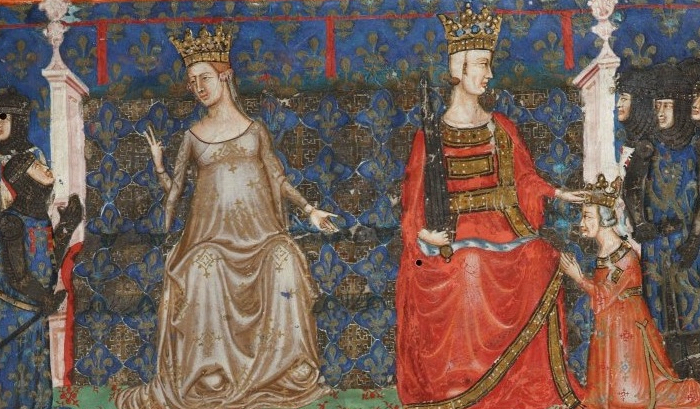
Charles and Beatrice had a hard deadline. When they left Rome with their army, they had only one month to defeat Manfred and claim Sicily. The knights who’d promised them service had sworn only for a three-month term. This was a traditional length of time to swear, and it would have been hard to get them to promise longer service. Two months had already passed just getting the army to Rome. Furthermore, the money Charles had raised would run out in a month. Beatrice stayed behind in Rome with a garrison to hold the city against Manfred’s subterfuges. Charles took the rest of the army into the field to meet Manfred as quickly as possible.
Charles’ and Manfred’s armies met at Benevento, east of Naples. It seemed Manfred held all the advantages. Manfred’s spies told him Charles was bound for Benevento, and Manfred snuck a march on him, reaching the city first. He was able to put his troops behind a river that Charles would have to cross to reach him: one heck of a defensive position. Charles’ troops were exhausted from the fast march he’d forced them to complete. And they were hungry. To save money, Charles had declined to feed his soldiers and horses through the march. The smart call on Manfred’s part would have been to wait Charles out. The Frenchman couldn’t stay long. He’d have to attack across the river before his knights and mercenaries went home.
But Manfred made a different decision. Seeing that Charles’ troops were hungry and tired, Manfred launched the attack. In so doing, he gave up his fabulous position behind the river. Worse, to reach Charles, Manfred’s troops had to charge uphill. So when the Sicilian force reached the French one, their positions were reversed: now it was the Sicilian army that was tired, the French one fighting from a better defensive position. One can totally see why Manfred thought this was a smart call, but it backfired. Charles carried the day (by the skin of his teeth), and Manfred was slain while rallying his men. No one even knew what happened to him until three days after the battle when a peasant showed up pulling Manfred’s corpse in a cart, hollering, “Who wants to buy Manfred?”
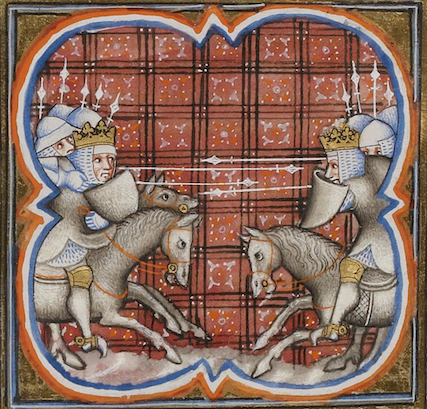
The rule of Charles and Beatrice didn’t amount to much. Beatrice died next year. Charles participated in his brother Louis’ disastrous next crusade. The Eighth Crusade was against Tunis, and much of the crusader army died of disease. King Louis himself died the day Charles arrived in Africa. Everyone soon went home. Charles never paid a dime of the debts he’d assumed from the papacy as payment for his crown. He made repeated attempts to expand his holdings in violation of his oath. In 1282, after sixteen years of harsh and unpopular rule, Charles’ subjects rose up against him. The rebels invited in the King and Queen of Aragon (in Spain) to replace Charles. The Queen of Aragon was Manfred’s daughter. During the ensuing war, Charles fell ill and died. As part of the war’s fallout, the Kingdom of Sicily was split in two: one kingdom for mainland southern Italy, another for the island of Sicily. By this point, the papacy had gone through an astonishing twelve popes dealing with this Sicily business. I would say the popes got the last laugh, but they kinda didn’t. Since the pope is definitionally the bishop of Rome, threats from southern Italy continued to manifest simply by virtue of it being a place near Rome where things happen sometimes. The wheel never stops turning.
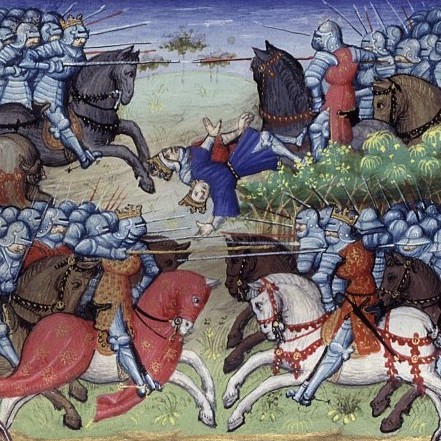
When using this story as a template for an RPG adventure at your table, I love how easy it is to slot in your game’s core activity or core gameplay loop. That’s the thing that PCs spend most of their time doing, regardless of what the overall justification of it is. So in a game like Call of Cthulhu, the core gameplay loop is “go to a place or person, where you acquire a clue that leads you to another place or person”. In most Dungeons and Dragons games, the core gameplay loop is “go to a place with a person or monster in it, then fight them”. In Mindjammer, it’s “confront a sci-fi situation, debate the philosophical conundrum at its heart, then use super-technology to resolve the conundrum according to the ethical compromise you reached.” Iterating the core gameplay loop over and over until you reach some sort of conclusion isn’t necessarily good GMing, but it is easy GMing, and most RPGs were designed with a core gameplay loop in mind, whether their designers were upfront about it or not.
So why does this idea of core gameplay loops matter for a fictional adventure based on Charles’ conquest of the Kingdom of Sicily? A startling amount of this conquest is just getting people to agree to things. Get Louis to agree to let Charles invade Sicily. Get knights to agree to join the army. Get the bankers to agree to loan you money. Get the Savoyards to agree to let the army through the pass. In a roleplaying scenario, each of those agreements is conditional on a single iteration of the core gameplay loop.
So let’s say that you’re running this in a fantasy setting using a rules set that supports a core gameplay loop of “find a monster and kill it”. Let’s say your PCs are very high level and have latched onto the adventure hook of buying a kingdom they first have to conquer. In this case, your version of the Louis IX NPC will agree to permit your conquest if you perform a single iteration of the core gameplay loop: if you kill a dragon. The bankers will loan you money if you kill the rust monster that’s moved into their bank vault. The Countess of Whatever will loan you her knights if you kill the duke of the cloud giants who’s been muscling in on her county. The Savoyard-analogues will let you through the pass if you kill the wizard who’s been lobbing fireballs down from his tower. If you were playing an investigative RPG, instead of killing a monster every time, you’d be solving a simple mystery each time. This all presupposes that your players actually enjoy the core gameplay loop – though if they don’t, you have bigger problems.
You obviously don’t want every adventure to be so transparently a series of connected gameplay loops. I cannot stress enough how important variety is in a long-running campaign! But as long as you’re not running this style of adventure too often, it’s a great tool to keep in your toolbox. It’s easy to prep, easy to run, and satisfying to play.
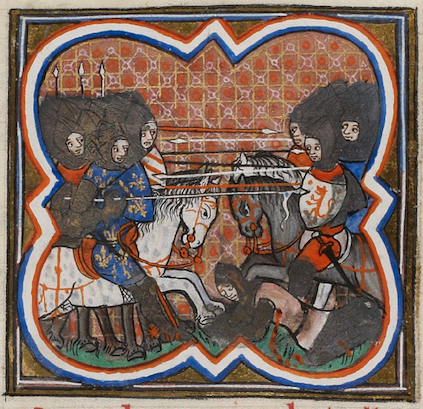
That then leaves us with the Battle of Benevento, or at least your fictional equivalent: the climactic battle where the party’s invasion will be won or lost. Definitely lean on there being a time limit on how long the PCs can keep their army. Not being able to drag out the war means the players should be glad to decide its outcome in a single engagement.
In real life, Manfred lost the Battle of Benevento because he attacked Charles, rather than waiting for Charles to attack him. That’s fabulous for the gaming table, because a single NPC’s decision whether to attack is the sort of thing a small group of motivated PCs can influence. As always, mass combat can be fun, but it’s a very different thing from the sorts of stories at which RPGs usually excel.
Lay out the stakes to your players. Explain that if they attack now, they’ll probably lose. In real history, that’s because Charles’ troops were hungry and exhausted, and they’d have to cross a river under fire. At your table, you can invent whatever reasons are suitable for your campaign. Then remind the players that they’re under a time constraint. In real history, the deadline was financial, but at your table the imminent arrival of enemy reinforcements can do the trick just as well, as can an expiration date on the party’s purchased legitimacy. No, if the PCs want to win this battle, their best bet is to find a way to trick or provoke their enemy into attacking now, thereby giving up its advantages and suffering some deleterious condition. (In the real Battle of Benevento, this was the fact that Manfred had to charge uphill.)
So now you’ve turned the battle from a messy situation that requires breaking out the mass combat rules into a puzzle! High-level PCs usually have all kinds of technology or magic at their disposal. Let them get creative about how they want to use it to induce their enemy to attack now. Then, depending on whether your players enjoy mass combat, you can either play the battle out with the PCs at a decided advantage, or you can just invite the players to narrate their narrow victory.

This is my 300th post on the Molten Sulfur Blog (counting posts taken from Archive, but not announcements and such). That number shouldn’t surprise me – August marks six years I’ve been doing this, and I’ve never missed a weekly update. But good God. Three hundred posts?
–

Looking for material for your game tonight? My back catalog has hundreds of great posts, all searchable and filterable so you can find something from real history or folklore that fits exactly what you need! Posts older than a year are behind a very cheap paywall – only $2/month!
Source: Four Queens: The Provençal Sisters Who Ruled Europe by Nancy Goldstone (2008)






